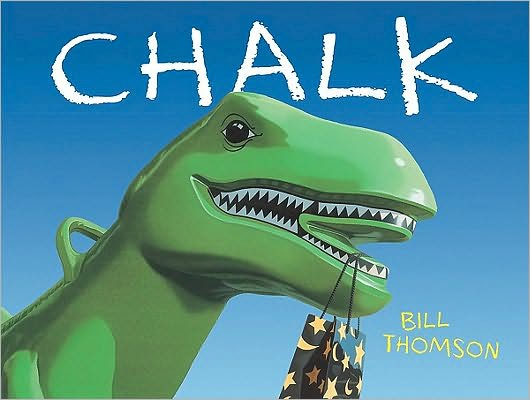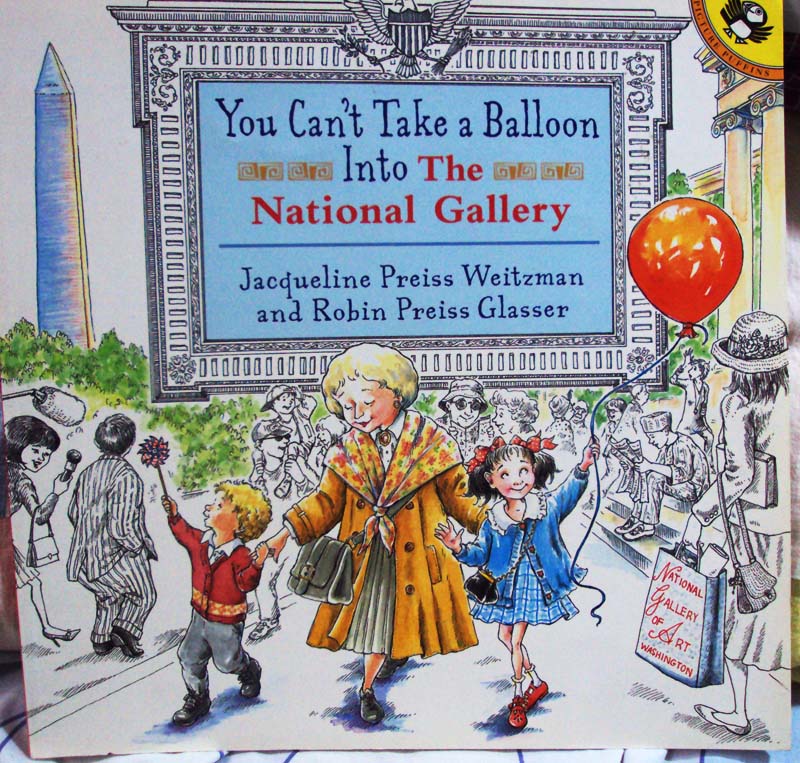I think one of my favorite things about this stage of Anouk's development is that her imagination is really starting to grow in leaps and bounds. All of a sudden, she is inventing the most hilarious conversations between her Barbies, putting plastic toys in her shoes and pretending they're airplanes, crying a pirate's "arrrr!" as I wheel her around the grocery store in her "pirate ship." (Less adorably, she will also sometimes tell people that J. and I have pinched or bitten her, which is taking it a bit far, I think).
So lately when we go to the library or the bookstore, I've been seeking out books without words to encourage her to use her imagination to understand what's on the page instead of me reciting it to her. Every day lately, before naptime or bed, we will lay down together and she will "read" me one of her books. Below are some of our favorites, the creme de la creme of an overall great niche of the child lit genre.
Chalk by Bill Thomson
On a rainy day, a group of friends finds a bag of magic chalk at a playground. Everything they draw comes to life, which leads to sometimes sticky situations, and the friends must scramble to draw new pictures to deal with the ones they've already drawn. Not only are the drawings in this book amazing, but the premise is a good way to introduce complicated concepts like problem solving and actions and consequences to kids who might not yet have the vocabulary to follow a verbal lesson on the subject.
Tuesday and Flotsam by David Wiesner
The beauty of Wiesner's works is that he tends to sets unfamiliar things in familiar places -- frogs floating over quiet suburban streets in Tuesday, an antique camera washed up on the beach in Flotsam -- and encourages you to go from there. Wiesner has several other books, but these two are our favorites, and I tend to buy them again and again to give as birthday presents for the kids in our crowd (spoiler alert for the few of you reading whose little ones' birthdays are upcoming). Funny, sweet, haunting and strange. A good mix.
The concept of slavery is still way beyond Anouk's pay grade at the moment but I brought Unspoken home as an experiment because I wanted to see how her little mind would interpret the complicated story of a white girl helping a runaway slave hide from patrolers. Unspoken is designed (it feels weird to say "written" when there are no words) well enough that she was able to get pretty close, pointing out the "bad men," understanding that the runaway character was hiding from them. I will note that she did seem to find a couple of the (beautiful, graphite) images a little disturbing, namely one of a pair of eyes peeking out from a haystack. So maybe this one isn't for the very youngest readers, but I think 4s and up should enjoy it (when we're reading it to A., we just skip that page and have no other issues).
Wave by Suzy Lee
This one is charmingly simple: A little girl and a wave play with each other at the beach. At first the two are separated, with the girl on the left pages and the wave on the right, but slowly as they jump, dance, and roll toward one another, they are drawn into the same frame. This was a fabulous book for helping A. overcome some of her fear of the ocean and just really cute overall.
You Can't Take a Balloon into the National Gallery by Jacqueline Preiss Weitzman
A boy and girl visit the National Gallery of Art with their grandmother, and the little girl leaves her balloon outside with a bystander, who accidentally lets it go and must scramble to find it. The balloon takes him on a chase through Washington, DC, encountering all sorts of people and famous landmarks, while the children and grandmother study paintings that reflect the balloon's movement through the city. (My favorite is a George Bellows painting of a boxing match juxtaposed with an argument on the floor of the US Senate). The National Gallery was one of our favorite places to go when we lived in the DC area, and it was nice to see it again, even in book form. Plus, we also really love the fun, Eloise-y vibe.
Have you read any of these books with your kids? What are some of your favorite wordless picture books?
















.jpg)


















